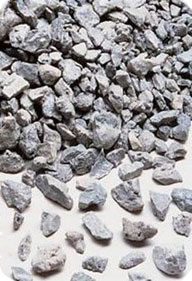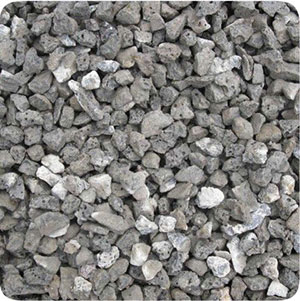- info@throop.com
- + 800-796-0285
 Aggregates or rocks and sand, in concrete are very important components. They usually account for 60 to 80 percent of the volume and 70 to 85 percent of the weight of concrete. Aggregates define the concrete’s thermal, elastic properties and dimensional stability. The use of aggregates in cement provides volume stability to the hardened concrete. The shrinkage potential of a cement mixture can be quite high when compared to the aggregates that are used in the mix design. Controlling shrinkage of the concrete mix is important since shrinkage and the potential for cracking increase together. In other words, higher shrinkage potential means more cracking.
Aggregates or rocks and sand, in concrete are very important components. They usually account for 60 to 80 percent of the volume and 70 to 85 percent of the weight of concrete. Aggregates define the concrete’s thermal, elastic properties and dimensional stability. The use of aggregates in cement provides volume stability to the hardened concrete. The shrinkage potential of a cement mixture can be quite high when compared to the aggregates that are used in the mix design. Controlling shrinkage of the concrete mix is important since shrinkage and the potential for cracking increase together. In other words, higher shrinkage potential means more cracking.
The George L. Throop Company in Pasadena, in southern California, grades and sizes aggregates within any required specified requirements. You tell us what type of aggregates are needed for your construction project job in southern California, the sizes required and the quantity and we will deliver. Since we are concrete specialists if you need help determining your aggregate needs, we are here to help.
 The use of coarse and fine aggregates in concrete provides significant cost savings in the final concrete product because, although aggregates typically make up a large percentage of the volume used in concrete, they are usually the least expensive of the materials used. But using the wrong aggregates just to save money can make a small cost savings turn into a huge loss in a concrete construction project if the wrong aggregates are used.
The use of coarse and fine aggregates in concrete provides significant cost savings in the final concrete product because, although aggregates typically make up a large percentage of the volume used in concrete, they are usually the least expensive of the materials used. But using the wrong aggregates just to save money can make a small cost savings turn into a huge loss in a concrete construction project if the wrong aggregates are used.
The quality and the consistent sizing of the aggregates used in concrete can be critical to the final product. The maximum size of the aggregates effect the workability and strength of the concrete. Aggregates also influence the water demand for getting to a certain workability. For a given weight, the higher the maximum size of aggregate, the lower the surface area of coarse aggregates and vice versa. As the maximum size of coarse aggregate reduces, the surface area of coarse aggregate increases. Higher the surface area, the greater is the water demand to coat the particles and generate workability. The grading of coarse aggregates is important in order to get cohesive and dense concrete. Proper grading of coarse aggregates improves the compactability of concrete. The voids left by larger coarse aggregate particles are filled by smaller coarse aggregate particles and so on. This way, the volume of mortar (cement-sand-water mix) required to fill the final voids is minimum. By properly grading coarse aggregates, the possibility of segregation is minimized, especially for higher workability.
When determining the needs of the cement construction project the following values need to be evaluated: aggregate absorption value, aggregate crushing value, aggregate impact value, and aggregate abrasion value.
Aggregates can absorb up to 2% by weight of water when in a bone-dry state, however, and in some cases the aggregate absorption can be as high as 5%. Aggregate absorption is used to apply a correction factor for aggregates in dry conditions and determining water demand of concrete in saturated surface dry conditions.
In summary, the use of aggregates can lower the cost of cement but, more importantly, they can contribute significantly to the final properties of any concrete mixture.
Contact the George L. Throop Company for ordering aggregates and for more specific information regarding aggregates for concrete for your next construction project and let us help you with your aggregate requirements.
